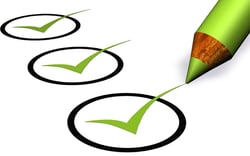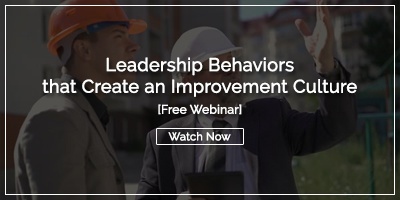 Kaizen events are an effective tool for harnessing the innovative ideas and creativity of your workforce to implement rapid improvement in a specific area of the organization. In the literature about Kaizen events, a lot of emphasis is put on the event itself, but we have found that often the difference between success and failure is actually the pre-event planning phase. Here are some critical items that should be part of your event preparation.
Kaizen events are an effective tool for harnessing the innovative ideas and creativity of your workforce to implement rapid improvement in a specific area of the organization. In the literature about Kaizen events, a lot of emphasis is put on the event itself, but we have found that often the difference between success and failure is actually the pre-event planning phase. Here are some critical items that should be part of your event preparation.
Choose a Qualified Facilitator
It is crucial to have a strong leader to facilitate the event. Some organizations choose to hire a professional consultant while others select an employee who has been trained for the role.
In either case, you want someone who understands the philosophy of Kaizen and who has experience or education on the improvement techniques that will be used. They should be capable of helping the team stay on target and make decisions that will lead to the best possible results. They should have great communication skills and be able to help the group work through conflict.
Your facilitator needs to be someone who truly believes that every person has the ability to improve and to improve the work they do. This belief will motivate employees to participate and make lasting change.
Get enthusiastic support from management
Although the executive team may not be directly involved in your Kaizen event, it is essential for them to clearly understand and endorse it. It is also important that they communicate this support to the entire organization, if possible, or at least those directly impacted. Share your goals and results with executives, and help them see how the improvements your team makes directly impact the organization's strategic goals.
If it is unclear that management is fully behind the effort, it is difficult to get whole-hearted engagement from employees. Events without executive endorsement also tend to result in changes that don't last and improvement results that degrade quickly.
Define the scope of the event
Keep in mind that Kaizen events are designed to target very specific areas of the organization. They are not well suited for major structural changes that cross many departments.
At the outset, define exactly what teams and departments are involved. The event should have a clear purpose or charter. This includes a clear definition of the problem you are trying to solve. For Lean organizations, this very often means defining a specific waste that will be targeted.
Select the team
In most cases, the team members will consist of people that work in the area targeted by the event, along with people from other involved constituencies. They may include people who produce work that is pulled into the target process and the internal customers of the results. Subject matter experts, vendors, and sometimes even customers can add value in certain situations.
It is also a good idea to consider each Kaizen event a training opportunity and include people who may not be directly involved in this particular improvement, but who may be important to a future Kaizen event.
Determine success metrics
It is important to understand exactly what success looks like and how it will be measured. If you are looking to improve efficiency, for example, you need to understand what data will be gathered to benchmark efficiency before the event and improvement afterward. Other metrics might include: cost, space used, man-hours, travel time, defects, and inventory.
Check out this free webinar to learn how to manage your improvement metrics more effectively and efficiently:
Pre-event training
Depending on the experience of your team, it may be necessary to train members on the principles of Kaizen and the tools and techniques that will be used. They should have an adequate understanding of your improvement software and know exactly how it will be used before, during, and after the event. Training should include information about their role and how their individual performance during the event will be assessed.
Event roadmap
You’ll want to have an outline of what will actually happen during your Kaizen event. Although everything that will happen can’t be predicted, a rough timeline is essential.
It might look something like:
Day 1: Document and agree on the current state. Define the desired state.
Day 2: Discuss possible solutions. Agree on changes to implement.
Day 3: Implement improvements
Day 4: Refine improvements, develop new standard work
Day 5: Train on new standard work. Communicate changes to management. Celebrate success.
The roadmap should also include a list of resources that may be required. This could range from simple office supplies like labeling machines, to outside resources like movers or electricians.
Launching a successful Kaizen event is admittedly a lot of work, but the results can be significant and long-lasting. In addition to the specific target improvements, a well-executed event produces experienced employees who will perform even more effectively on the next one. If you put in the effort upfront, you can begin your event confident that your improvement goals will be achieved.


![[Watch Now] Top-Down Improvement Software Demo](https://no-cache.hubspot.com/cta/default/326641/2eef07b8-9131-49c5-9adc-bafb52e8796e.png)


Add a Comment